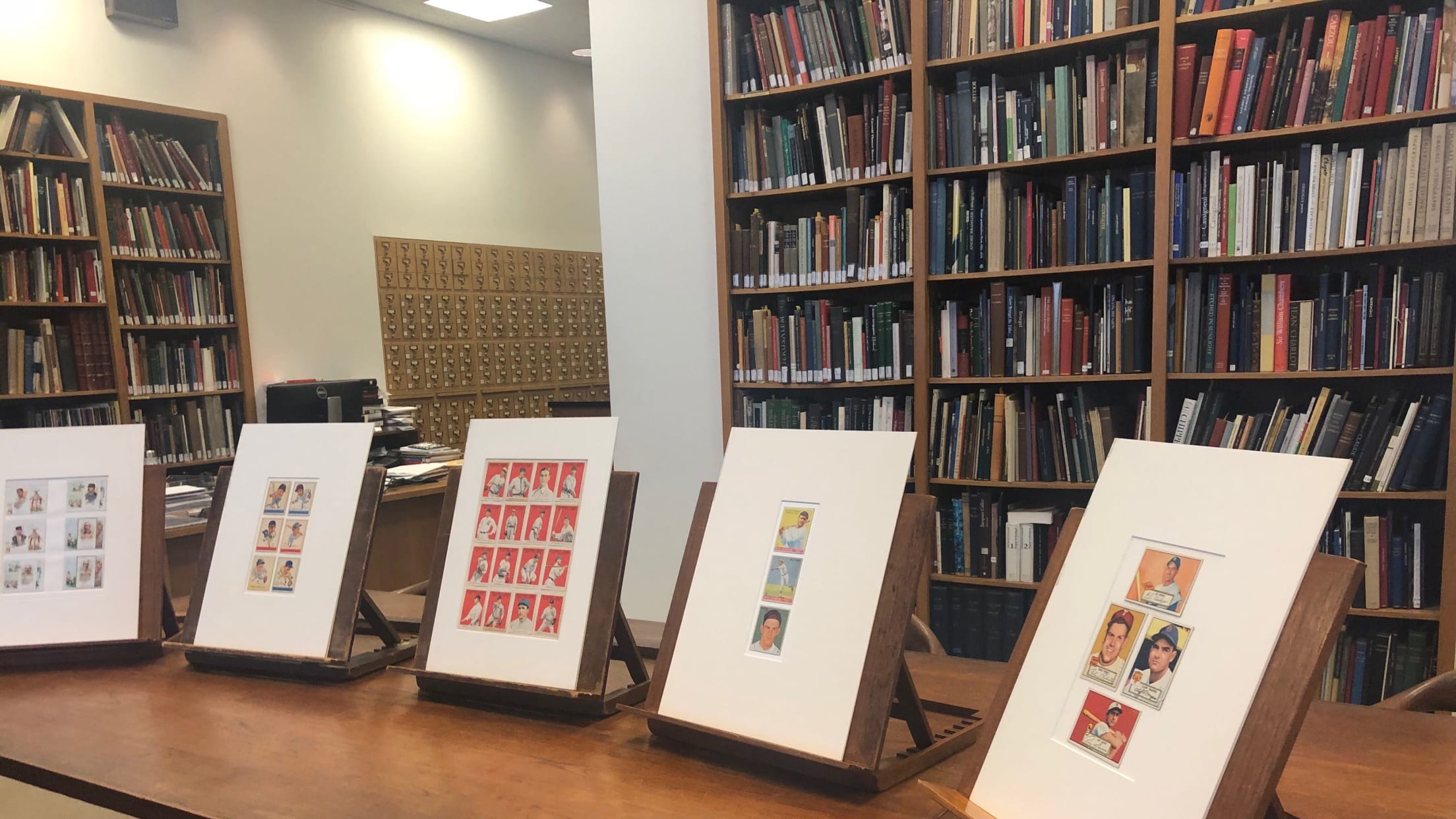The Metropolitan Museum of Art has one of the best baseball card collections in the world thanks to one man

One of the world¡¯s largest baseball card collections is hidden among the priceless and timeless works of art found at the Metropolitan Museum of Art. So, why does the baseball card -- that lowly cardboard image that was once designed to entice children to buy bubblegum -- get a spot next to ancient artifacts, Renaissance paintings and modern sculptures inside one of the world¡¯s finest art museums?
You can thank one man: Jefferson R. Burdick, known as one of the forefathers of baseball card collecting.
While you may think of baseball cards today as glossy, colorful cards that can sell for vast sums of cash (less often than many would like, though), that wasn¡¯t always the case. Instead, they began as advertising tools. First coming into existence as large cabinet cards showcasing photography studios, they were soon used to help sell cigarettes and later, gum. Collected by children and seen as disposable by adults, few thought that they were worth keeping or categorizing.
But then there was Burdick and a small group of hobbyists who did think these things were important. With painful chronic arthritis that made it difficult to do even the most simple of tasks, Burdick spent his free time collecting almost everything that was printed. That included advertisements, cigar wrappers, greeting cards and, of course, baseball cards. He assembled over 300,000 objects, with over 30,000 of those being baseball cards. (Oddly enough, Burdick wasn't much of a baseball fan and may never have even attended a game. The collecting was the goal.)

So, with his health declining, Burdick approached the Metropolitan Museum of Art in 1947 to donate his collection. However, the museum said no and told him to try other museums. When they all turned him down, Burdick returned and plead his case to A. Hyatt Mayor, the curator of prints and photographs. Burdick pointed to the historical significance of a collection of such size.
¡°[A. Hyatt] Mayor was actually a pretty forward thinking curator,¡± said Allison Rudnick, assistant curator in the department of drawings and prints at the museum. ¡°He understood the importance of having records of visual culture in an art institution and eventually said, ¡®Sure we'll take the collection, but it's enormous. We need it to be cataloged and organized in order to be able to store it.'"
Were Burdick less committed, his collection could have been lost, scattered to a variety of tag sales, flea markets and landfills. In that world, modern collecting might have never taken off. Instead, Burdick agreed and began working at the Met to catalog his enormous collection. He moved from his home in Oswego County, N.Y., and brought his small art nouveau-style desk into the study room where he began the painstaking work of pasting cards into albums. While modern collectors would be horrified at the thought of these cards being pasted down, Burdick cared more about showcasing the sharp images and bright colors; the historical tale they told rather than their condition so they could be sold.
¡°When Burdick was adhering his cards to album pages he wasn't thinking about their monetary value,¡± Rudnick said. ¡°This was decades ago before the market for baseball cards had become what it is. For him, the value was in the story that they told about visual culture. For him, it was important that the public had access to these cards.¡±
It's one thing for a collector like Burdick to care about these cards, but how does an art museum like The Met look at these objects -- including like the famous T206 Honus Wagner or a Jackie Robinson rookie card -- and find them worthy of display alongside such priceless artifacts?
"[The cards] are actually quite similar to the Rembrandt prints,¡± Rudnick said ¨C referring to the Dutch master. ¡°Obviously, we now think of Rembrandt prints as being fine artworks, which they are, but they were also widely dispersed. This was before the internet and television. This was the way people received information and the way knowledge was dispersed was through prints. Baseball cards functioned in a very similar way."
With Burdick's collection spanning from the 1880s to the 1960s, they reflect the changing of the game and fashion. They also represented the technological change in printmaking processes and techniques.
"This collection is a record of visual culture, especially American visual culture," Rudnick said.
According to Mayor, Burdick put the finishing touches on the collection on Jan. 10, 1963. He then got up from his desk, "twisted himself into his overcoat,¡± said ¡°I shan¡¯t be back¡± and walked out -- his task complete. The next day, he checked himself into the hospital where he would pass away three months later.
While Burdick completed his mission of cataloging his enormous collection before his death, they would sit where he left them in his albums for nearly 30 years. It would take until 1993, when the world went crazy for baseball cards and the amount they were fetching at auction, for the museum to get them out of storage and put them on display for the very first time. Baseball card fanatics went wild, with former Yankees star Phil Rizzuto on hand to see the collection. It's a future that Burdick probably hoped for, but may never have imagined: His baseball cards forever on display to the public at the world's greatest art museum.

Because the cards can be so easily damaged by light, the Met changes which cards are put on display every six months. Don't worry if you can't make it to New York, though. The museum is also working to digitize all of Burdick's collection, which you can view here.





